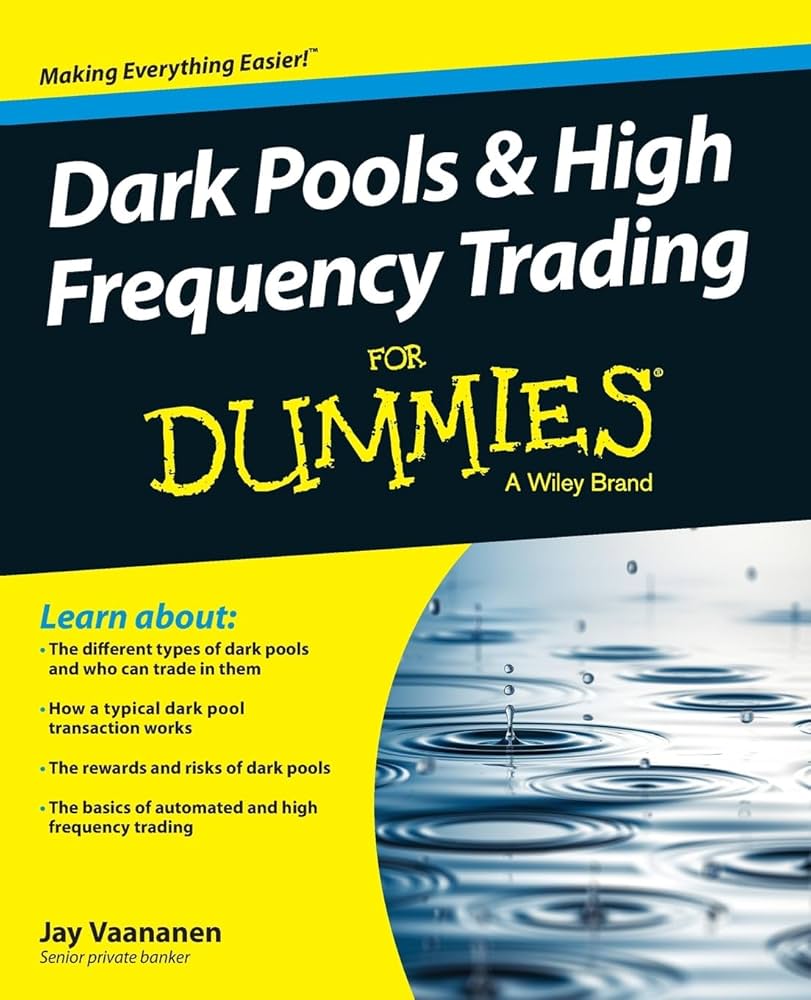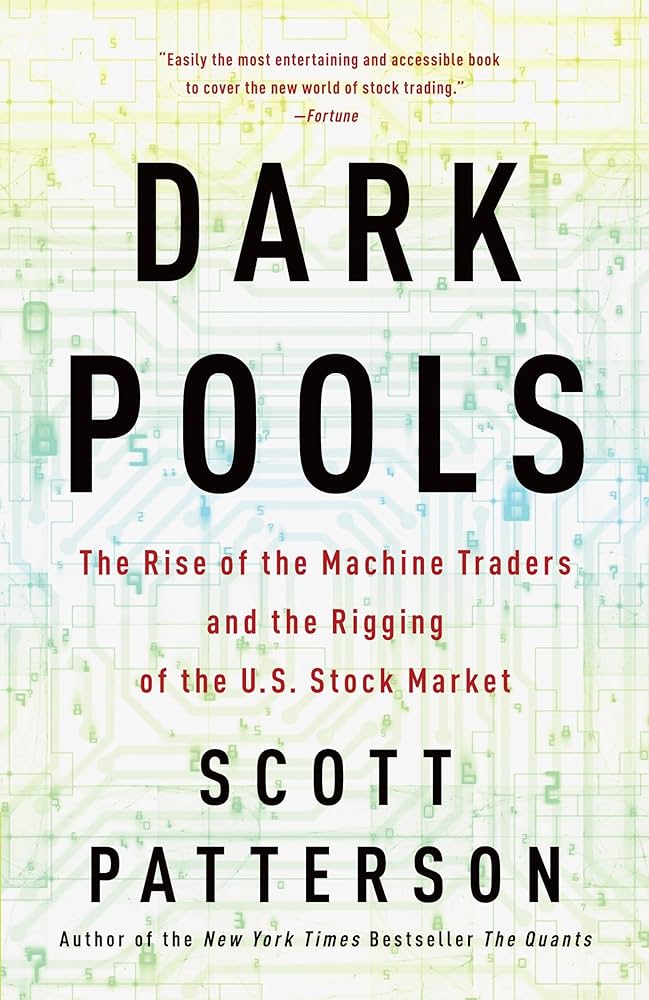Did you know that dark pools are like secret underground clubs for traders, where the music is great but the light is low? In this article, we dive into the intriguing world of dark pool trades and their susceptibility to front-running. We’ll explore whether traders can front-run these transactions, how dark pools mitigate front-running risks, and the impact of large orders on market movements. Additionally, we’ll discuss the safety of dark pools from manipulation, regulatory oversight, and the technologies used to detect potential front-running activities. By the end, you’ll understand how to protect your investments and whether dark pools truly compromise market integrity. Keep reading to uncover the hidden dynamics of dark pool trading with insights from DayTradingBusiness!
Can Dark Pool Trades Be Front-Run by Traders?
Yes, dark pool trades can be front-run by traders. Some traders observe large orders in dark pools and trade ahead of them to profit from the price movement, despite dark pools being designed for anonymity.
How Do Dark Pools Reduce Front-Running Risks?
Dark pools reduce front-running risks by keeping trade details hidden until execution, preventing traders from seeing and acting on large orders beforehand. This secrecy limits the opportunity for other traders to front-run, as they can't anticipate or copy the trade in real-time. By anonymizing order flow, dark pools protect institutional investors from predatory practices, ensuring trades happen without manipulation.
Are Dark Pools Safe from Market Manipulation?
Dark pools can be front-run because traders outside the dark pool may see large orders and trade ahead, potentially manipulating the market. While dark pools aim to reduce market impact, they are still vulnerable to front-running by high-frequency traders or institutional players.
What Is Front-Running and How Does It Occur in Dark Pools?
Front-running is when a trader executes an order knowing a large trade is coming, aiming to profit from the price movement before it happens. In dark pools, traders can see large orders before they hit public exchanges, creating opportunities for front-running. Some participants may place their own trades ahead of these big orders to capitalize on the expected price change, effectively front-running in the dark pool. While dark pools are designed for anonymity, the potential for front-running exists if traders have access to order flow information.
Can Large Orders in Dark Pools Signal Market Moves?
Large orders in dark pools can signal upcoming market moves because they often involve institutional investors accumulating or unloading significant positions quietly. Traders watch these blocks for clues about potential price shifts. While dark pools are designed for anonymity, some speculate that savvy traders can front-run these large trades if they detect patterns or follow the flow. However, dark pools have safeguards to prevent front-running, making it difficult but not impossible. So, yes, big dark pool trades can hint at market moves, but they’re not foolproof indicators of front-running.
How Do Regulators Monitor Dark Pool Trading for Front-Running?
Regulators track dark pool trading by analyzing order flow, looking for patterns where large trades precede big price moves, indicating potential front-running. They scrutinize trade timestamps, volume spikes, and the timing of orders relative to market activity. Surveillance tools compare dark pool activity with public market data to identify suspicious behavior. Investigators review whether traders consistently benefit from front-running tactics, often using algorithms to detect anomalies. Overall, they use a combination of real-time monitoring, historical data analysis, and pattern recognition to catch front-running in dark pools.
Is Front-Running More Likely in Dark Pools or Public Markets?
Front-running is more likely in public markets because they are transparent, allowing traders to see order flow and act on it. Dark pools hide order details, making it harder for traders to anticipate or manipulate trades, reducing front-running risk.
Can High-Frequency Trading Exploit Dark Pool Information?

Yes, high-frequency traders can potentially exploit dark pool information to front-run trades by detecting large orders and trading ahead of them, but regulations and safeguards aim to prevent such abuse.
What Are the Signs of Front-Running in Dark Pool Data?
Signs of front-running in dark pool data include sudden, unexplained price movements before large trades, unusually high trading volume just ahead of big orders, and patterns where the price moves in anticipation of known large trades. If you see small trades happening right before a major block trade, it might be front-running. Also, inconsistent timing between dark pool activity and subsequent price jumps signals potential front-running.
How Do Investors Protect Themselves from Front-Running in Dark Pools?
Investors protect themselves from front-running in dark pools by using algorithms that mask order intentions, splitting large trades into smaller parts, and employing strategic timing to avoid revealing trade details. They also rely on strict regulations and best execution practices to minimize the risk of predatory trading. Some hedge funds and institutional traders use advanced technology to detect and prevent front-running attempts.
Are Dark Pools Transparent Enough to Prevent Front-Running?

No, dark pool trades aren’t transparent enough to prevent front-running. Their hidden nature makes it easy for traders to see large orders before they execute, which can lead to front-running. Although regulations aim to limit this, the lack of real-time visibility means front-runners can still profit by acting on order flow information.
Do Dark Pool Trades Impact Overall Market Integrity?
Dark pool trades can impact market integrity by enabling potential front-running, where traders see large dark pool orders and trade ahead, possibly manipulating prices. While dark pools aim to provide liquidity without revealing intentions, they can be exploited, undermining fair price discovery. Front-running in dark pools erodes trust and can distort overall market transparency and integrity.
Can Front-Running in Dark Pools Affect Stock Prices?

Yes, front-running in dark pools can affect stock prices. When traders exploit dark pool information to buy or sell ahead of large orders, it can move the stock price before the broader market sees the trade. This manipulation can lead to artificial price shifts, impacting investor decisions and market transparency.
What Technologies Are Used to Detect Front-Running in Dark Pools?
Technologies used to detect front-running in dark pools include advanced order monitoring systems, machine learning algorithms analyzing trade patterns, and real-time anomaly detection tools. These systems track unusual trading activity, such as large pre-market orders or rapid order cancellations, to identify potential front-running. Regulators also employ surveillance software that flags suspicious behavior, like consistent front-loading before large client trades or suspicious timing patterns.
How Do Dark Pool Regulations Limit Front-Running Risks?
Dark pool regulations limit front-running by requiring traders to disclose large orders only after execution, preventing predatory traders from acting on order flow. They enforce strict reporting standards and impose penalties for early disclosure or manipulative practices. This transparency delay reduces the chance of traders exploiting order information before trades are completed.
Are There Differences Between Dark Pool and Traditional Market Front-Running?
Yes. In traditional markets, front-running involves brokers executing orders ahead of clients’ trades, risking conflicts of interest. Dark pools, being private exchanges, limit public information, making front-running less straightforward but still possible if traders exploit order flow or liquidity signals. The main difference is transparency: traditional markets reveal order details, enabling front-runners; dark pools keep trades hidden, reducing opportunities but not eliminating the risk entirely.
Conclusion about Can Dark Pool Trades Be Front-Run?
In conclusion, while dark pool trades can present opportunities, they are not entirely immune to front-running risks. Understanding how dark pools operate and the regulatory measures in place can help traders navigate these complexities. By leveraging insights from resources like DayTradingBusiness, investors can enhance their strategies to mitigate risks and make informed trading decisions in both dark pools and public markets.